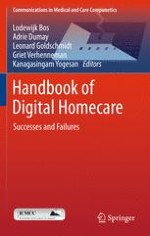2011 | Book
Handbook of Digital Homecare
Successes and Failures
Editors: Lodewijk Bos, Adrie Dumay, Leonard Goldschmidt, Griet Verhenneman, Kanagasingam Yogesan
Publisher: Springer Berlin Heidelberg
Book Series : Communications in Medical and Care Compunetics
